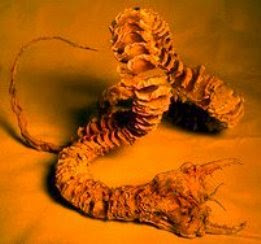Unidentified hotels and holiday resorts are amongst the culprits who are seriously, and most likely permanently, damaging the rich ecosystem which is to be found off the coats of the states of Terengganu and Johor, Malaysia.
According to local media reports HERE the hotel owners / operators are unwilling to invest in a pipe connection to oxidation ponds and have been discharging untreated sewage and effluents directly into the once pristine sea off the east coast of Peninsular
The areas lying within a two nautical mile (3.7 kilometre) radius (Except for Pulau Kapas, where it is within a one nautical mile ( 1.85 kilometre) radius) from the shores of these islands are Gazetted Marine Parks. Fishing and potentially damaging activities are prohibited within these marine park zones.
“1994
- 38 islands in the state of Kedah, Terengganu, Pahang, Johor and Federal Territory of Labuan were declared and gazetted as Marine Parks Malaysia under the Fisheries Act, 1985, which covers water stretching 2 nautical miles from the shore to the surrounding islands (exception for Pulau Kapas where marine park waters covers one nautical mile seaward from the outermost points of the island – Second Schedule)”. [of the Fisheries Act 1985]
2007
- Effective on 16th of July 2007, Marine Park Section {of the Fisheries Department] officially it becomes Department of Marine Park Malaysia with job growth as many as 154 new positions in addition to 86 present posts.
Souce: http://www.dmpm.nre.gov.my/jtl/content.php?lang=1&ctn_trans_id=296
More jobs for the bureaucratic paper pushing boys and girls!
But, almost one year on, much of the website is still under construction!
These marine parks are rich in exotic marine life, about 500 species of coral reef and 300 species of fish thrive there.
Their future survival is now in serious jeopardy, the Terengganu State Commerce, Industry and Environment committee chairman Toh Chin Yaw has admitted that the poor waste disposal system had caused an adverse impact on the coral ecosystems surrounding the islands.
“We are aware of this and are working closely with environmentalists and other marine agencies to monitor the situation,” he said.
MORE THAN JUST MONITORING IS URGENTLY NEEDED!
Toh reportedly said most of the hotels and resorts operating in the islands felt the onus was on the Government to provide them with a proper sewage system.
“The operators should realise that there are existing drainage system at the isles and they should emulate the prominent hotels and resorts that comply with the requirement for waste management,” he said.
Passing the buck, is the usual modus operandi in Malaysia, he certainly confirmed this by saying, according to this news report (link as above) that "the Terengganu state government has no jurisdiction to act as marine parks come under the purview of a federal agency, the Marine Parks Department."
That maybe the case, but surely the Terengganu state government has control at least over the land use, and licensing of the hotels and resorts, as well as over waste disposal.
Could bribery and corruption be one of the reasons for the lack of action?
Perhaps it could be, not to mention avarice and greed!
“Malaysian coral reefs are being poisoned and choked by organic pollution and sedimentation, particularly from construction near the Palau Redang marine reserve. Reefs off Sabah are being overexploited, and the
For more information click HERE & HERE
Unidentified hotels and holiday resorts on several holiday islands are among the culprits who are irreparably damaging the rich coral ecosystem found off the coast ot Terengganu.
As a consequence, soon coral reefs will be perhaps no more, how very sad for the future generations.Action now is needed to preserve the irreplaceable coral ecosystems
- The dire necessity.









































